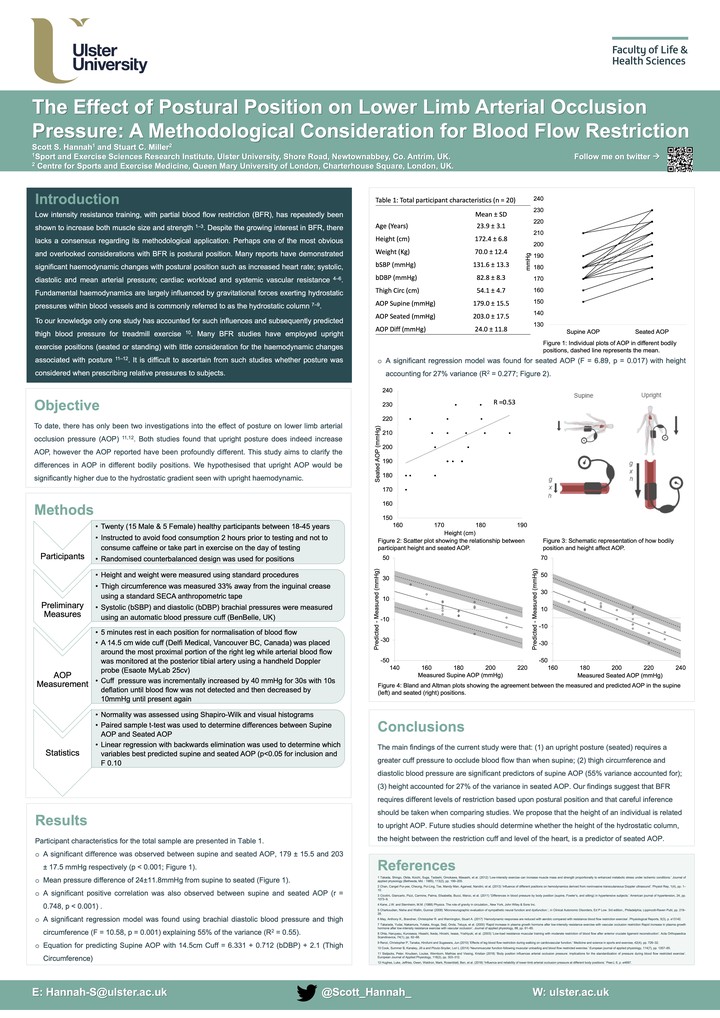 Image credit: [Scott Hannah]
Image credit: [Scott Hannah]
Abstract
Blood flow restriction (BFR) exercise has increased in popularity over recent years due to its ability to stimulate muscular adaptation with reduced workloads. However, a precise methodology is still yet to be determined. Perhaps one of the largest oversights has been the effect posture plays on restricting blood flow. The aim of this study was to compare the effects of commonly used blood flow restriction exercise positions (seated and supine) on arterial occlusion pressure (AOP) in the lower limb. Twenty participants underwent measurements of blood pressure and anthropometrics. Audio and visual signals via Doppler ultrasound were used to determine AOP in both supine and seated positions at the posterior tibial artery. Seated AOP was significantly higher than when supine, 203 ± 17.5 and 179 ± 15.5 mmHg respectively. Regression analysis revealed thigh circumference and diastolic blood pressure were significant predictors of supine AOP (R2 = 0.55), but not seated AOP; height was the only significant predictor of seated AOP (R2 = 0.277). In conclusion, AOP was significantly greater in a seated position than supine, suggesting that hydrostatic pressure influences AOP. This was further supported by height predicting seated AOP, we propose that gravity induced-hydrostatic pressure and the height of the hydrostatic column significantly alters seated AOP. Future studies should aim to determine the precise effect the hydrostatic column has on lower limb AOP.